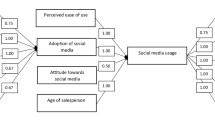Abstract
The exponential growth that has recently characterized the diffusion of electronic commerce (EC) applications could lead companies of any size to plan new investments. The first business experiences show that EC should be considered a competitive instrument not simply affecting economic transactions, but significantly influencing the business organizational structure and strategic objectives. Although this issue has recently been object of considerable attention, the research on the evaluation of EC adoption for Small and Medium Enterprises (SMEs) is still relatively new. This paper aims at supporting SMEs in choosing the most suitable EC approach according to their peculiarities and strategic goals. This objective has been pursued through the classification of five main EC activities, which are characterized by different requirements and attainable results. The identification of the main business variables involved in an EC project and the resulting classification of SME profiles should help the entrepreneur in becoming aware of his/her organization. Finally, a cross analysis between EC activities and SME profiles allows developing a framework suggesting the most suitable EC approach for each business profile. This framework provides SMEs with a simple and easy to use tool to perform a qualitative evaluation of the EC opportunity.
Similar content being viewed by others
References
P. Andrews and J. Hahn, Transforming supply chains into value webs, Strategy & Leadership (July/August 1998).
S.A. Baker, The Limits of Trust: Cryptography, Governments, and Electronic Commerce (Kluwer Law International, 1998).
A.G. Bedeian, Organization Theory and Analysis (Dryden Press, 1980).
R. Benjamin and J. Yates, The past and present as a window on the future, in: The Corporation of the 1990s, ed. S. Morton (Oxford University Press, NY, 1991) pp. 61–92.
A.C. Boynton and R.W. Zmud, The influence of IT management practice on IT use in large organizations, MIS Quarterly 18(3) (1994) 299.
G. Buonanno, S. Gramignoli, A. Ravarini, D. Sciuto and M. Tagliavini, ICT diffusion and strategic role within SMEs: a regional study, in: Proceedings of 2000 Information Resources Management Association International Conference, Anchorage, Alaska (2000).
G. Buonanno, A. Ravarini, D. Sciuto and M. Tagliavini, How Internet connected SMEs exploit the potential of the net, in: Proceedings of International Conference on Information Resources Management Association, Boston, Massachusetts, USA (1998).
C. Chappell and S. Feindt, Analysis of E-commerce practice in SMEs, KITE, Knowledge and Information Transfer on Electronic Commerce, http://kite.tsa.de/bp_analysis.zip (March 21st, 2000) 1999.
C. Chaumont, T. de Charentenay, L. Esnault, E. Fay, N. Iglesias and H. Silvestre, SMEs and multimedia, Final Report, E.M. Lyon (1998).
J. Clark, Managing Innovation and Change (Sage Publications, London, 1995).
COM, 1997, A European Initiative in Electronic Commerce: Communication to the European Parliament, the Council, the Economic and Social Committee and the Committee of the Regions, http://www. cordis.lu/esprit/src/ecomcom1.htm (March 6th, 2000).
P.B. Cragg and N. Zinatelli, The evolution of information systems in small firms, Information and Management (29 July 1995) 1–8.
C. Davies, An assessment of accounting information security, CPA Journal 67(3) (1997).
D. Depperu, L'internazionalizzazione delle piccole e medie imprese (in Italian: SME internationalization), EGEA (1993).
DG XII at the European Commition, A new common definition for SMEs, Press Releases, 1996, http://europa.eu.int/comm/dg04/lawaid/en/sme2.htm (March 6th, 2000).
A. Di Romualdo and V. Gurbaxani, Strategic intent for IT outsourcing, Sloan Management Review 39(4)(1998) 67.
P.F. Drucker, The coming of the new organization, Harvard Business Review 66(1) (1988) 45.
S. Gramignoli, A. Ravarini and M. Tagliavini, A profile for the IT manager within SMEs, in: Proceedings of ACM International Conference SIGCPR 1999 (New Orleans, LA, 1999).
M. Hills, Intranet Business Strategies (Wiley, 1997).
A. Huczynsky and D. Buchanan, Organizational Behaviour, ed. H. Hempstead, 2nd Ed. (Prentice Hall, 1991).
D.S. Janal, Online Marketing Handbook, how to Promote, Advertise, and Sell Your Products and Services on the Internet (ITP, 1998).
R.M. Kanter, The Change Masters (Simon and Shuster, New York, 1983).
W.R. King and T.S.H. Teo, Facilitators and inhibitors for the strategic use of information technology, Information and Management 27 (1994) 71.
KPMG, Electronic Commerce Research Report (1998), http://www.kpmg.co.uk/kpmg/uk/services/manage/research/ec/ecom98.html (March 6th, 2000).
I. McLoughlin and J. Clark, Technological Change at Work, ed. M. Keynes, 2nd Ed. (Open University Press, 1994).
A. Mitrakas, Open EDI and Law in Europe: A Regulatory Framework (Kluwer Law International, 1997).
M.E. Nissen, Commerce Model & the Intelligent Hub, CommerceNet CALS Working Group Presentation (1995).
OECD, SMEs and Electronic Commerce, Working Party on SMEs to the OECD Ministerial Conference on Electronic Commerce, Ottawa (October 1998), http://www.oecd.org/dsti/sti/it/ec/prod/ sme18e.pdf (March 6th, 2000).
P. Palvia, D.B. Means and W.M. Jackson, Determinants of computing in very small businesses, Information and Management 27 (1994) 161.
G.C. Reid, L.R. Jacobsen and M.E. Anderson, Profiles in Small Business (Routledge, 1993).
J. Reynolds, The Internet as a strategic resource: Evidence from the European retail sector, in: Managing IT as a Strategic Resource (McGraw-Hill, 1997).
Y.A. Saanen, A. Verbraek and S.G. Henk, Snapshots of e-commerce's opportunities and threats, Electronic Markets 9(3) (1999).
E.I. Schwartz, Webonomics, Nine Essential Principles for Growing your Business on the World Wide Web (Broadway Books, 1997).
P. Timmers, Electronic Commerce: Strategies and Models for Business-to-Business Trading (Wiley, 1999).
Yao-Hua Tan and H. Konstapel, A requirements analysis for improving the participation of small and medium size enterprises in electronic commerce, in: Proceedings of the 11th International Bled Electronic Commerce Conference, Bled, Slovenia (1998).
R. Wigand, A. Picot and R. Reichwald, Information, Organization and Management (Wiley, New York, 1997).
Author information
Authors and Affiliations
Rights and permissions
About this article
Cite this article
Tagliavini, M., Ravarini, A. & Antonelli, A. An Evaluation Model for Electronic Commerce Activities within SMEs. Information Technology and Management 2, 211–230 (2001). https://doi.org/10.1023/A:1011417703063
Issue Date:
DOI: https://doi.org/10.1023/A:1011417703063




